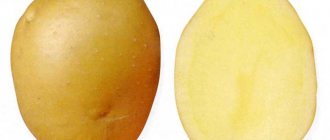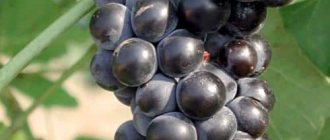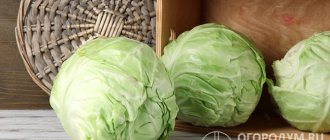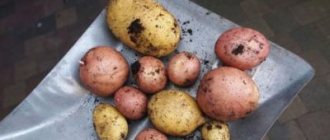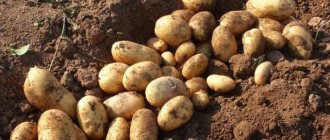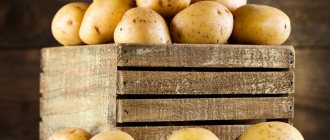- Which potatoes are best for long-term storage?
- Features of buying potatoes in a store and at the market
- The most delicious varieties of potatoes The best varieties of potatoes for mashed potatoes
- The best potato varieties for soups and salads
- The best varieties of potatoes for frying
Features of buying potatoes in a store and at the market
In a supermarket, you can glean something from the inscription on the price tag or packaging. It’s good when the manufacturer writes for what culinary purposes the variety is suitable: for salad, for boiling, for frying. Now both foreign (Holland, France, Israel) and domestic suppliers often supply packaged potatoes with such explanations.
By the way, the quality of washed packaged potatoes is the same everywhere; which country to choose is a matter of taste.
It’s more difficult when, instead of the designated variety, they write: gourmet potatoes , domestic potatoes , or something like that. Then we arm ourselves with a magnifying glass and look for the composition column, if the label is present.
Starch content above 15% - the variety is suitable for puree . Below 15% - for soup and salad . Dry matter - no less than 20-24%, and reducing sugars - no more than 0.5% - such potatoes can be fried, they will not crumble in a frying pan or in a deep fryer and will not acquire a bitter chocolate “tan”. It happens that any data on the composition and purpose of the variety is missing. Then all that remains is to take the bag for testing and evaluate its qualities yourself.
At the market, many sellers can name the varieties they sell. Also useful information.
The best varieties of potatoes for long-term storage: features and photos
So, let's look at which varieties are better stored in winter and are also resistant to rot and other diseases.
Slav
Mid-season (ripening time 100-120 days), table purpose, grown almost everywhere and has a fairly high yield (300-330 c/ha). The bush grows up to 12-15 large tubers weighing 90-180 g. Thanks to its unpretentiousness, this variety is not afraid of changeable weather.
It has a high shelf life (95%) and retains its taste and appearance throughout the entire storage period. Slavyanka is immune to potato cancer, leaf curl, blackleg, nematode, and is moderately resistant to late blight.
Nevsky
Mid-season, high-yielding (380-500 c/ha), table. It is considered the best of the domestic ones; its yield is close to that of the Dutch. Ripening time is 70-85 days. Each plant produces 9-15 tubers of 90-130 g each. Keeping quality is 92-95%. Cultivation is preferable in regions with sandy loam soils and light loams. Moderately resistant to scab and late blight.
Gatchinsky
Mid-season Russian table variety with excellent yield (400-450 c/ha) and keeping quality at 94%. Preferred regions for cultivation are Northwestern, Central, Volga-Vyatka, North Caucasus, Middle Volga, Lower Volga, Ural, Far Eastern.
Resistant to potato canker, relatively resistant to late blight of tops and tubers, common scab, and blackleg. The presence of starch at the level of 12-16%, is universal in terms of cooking methods, as it is suitable for frying, boiling, baking and making purees.
Sante
Mid-season, Dutch, with a yield of up to 570 c/ha. Ripens in 85-90 days, each bush will produce up to 20 tubers weighing 90-120 g. Keeping quality is slightly lower than the varieties listed above - 92%.
Recommended for growing in the central zone and southern Russia. The immune system is not resistant to late blight and scab. Due to its low starch content (10-14%), it is suitable for frying and making French fries.
Adretta
Mid-season, German selection (vegetation period 70-105 days) with a yield of up to 450 c/ha. The number of tubers on a bush is from 15 to 25, weighing 120-150 g each. It has a very high level of keeping quality - 98%.
Suitable for cultivation in the Central, Far Eastern, Middle Volga, Western Siberian regions and Crimea. However, it is susceptible to scab, rhizoctonia, and late blight. The percentage of starch is increased (13-18%), so these potatoes are suitable for serving as mashed potatoes or whole for frying.
Atlant
A late-ripening winter variety of Belarusian selection (ripens in 110-120 days) with extraordinary productivity (up to 660 c/ha). Tubers of 90-120 g each ripen in the amount of 7-11 pieces per bush. It also has excellent keeping quality - 95%.
Contains a lot of starch (15-21%), so these potatoes are very soft and ideal for mashing and baking.
Read also: At what distance to plant tulips
Another variety of Belarusian selection is a mid-season variety (ripens in 80-90 days) with a yield of up to 680 c/ha. Highly resistant to potato canker, scab, blackleg, but at the same time moderately resistant to late blight and rhizoctonia. Characterized by good keeping quality. Due to its fairly low starch content (10-14%), it is best suited for frying.
Kolobok
Mid-season (growing season 90-115 days) with a yield in the range of 130-250 c/ha. Each bush ripens up to 15-18 tubers weighing 90-140 g. It has a long shelf life, without losing its appearance and taste for a long time. The best regions for cultivation are Central and Central Black Earth.
Kolobok is highly resistant to potato cancer, scab, and various viruses, but can be susceptible to nematodes and late blight. The starch level of 13% to 15% makes it most suitable for the production of potato products (chips, freeze-dried mashed potatoes, mixed vegetables, frozen French fries).
The most delicious varieties of potatoes
For mashed potatoes, it is recommended to take high-starchy potatoes - crumbly ones. The puree will be tender and fluffy, although very high in calories.
The best potato varieties for mashed potatoes
Golubizna, Lorch, Sineglazka, Lugovskoy, Adretta, Elizaveta .
When cooking mashed potatoes, it is better to put the tubers in boiling water, and for salad - in cold water.
Until the water boils, some of the starch will be washed out of the salad potatoes, and they will not crumble. For soup and salad, it is better to choose potato varieties with a low starch content. They do not fall apart when cooked and do not ruin our weight loss program.
The best potato varieties for soups and salads
Leader, Handsome, Alvara, Red Scarlett, Nevsky, Luck, Nikulinsky.
salad variety, Gourmet , with dark blue flesh and a high content of antioxidants, may soon appear in grocery supermarkets It can also be eaten fresh.
For frying , we choose potato varieties with a high dry matter content and the ability to “keep” starch from breaking down into sugars. Thanks to this property, potato slices retain their shape when fried.
potato variety Evolution
The best varieties of potatoes for frying
Leader, Nadezhda, Kolobok, Bryansk early, Zhukovsky early, Impala, Felox.
Why are mid-late and late varieties recommended for wintering?
The ripening time of potatoes is an important indicator when choosing a variety for storage. Potatoes with medium or late ripening periods last the longest.
Early varieties have too thin skins that cannot store potatoes for a long time
Tubers of early varieties have a very thin skin and the tubers quickly become lethargic and lose their taste. They will lie in the cellar for 1-2 months and even under ideal conditions they will last until November at best.
For reference! Early varieties can be stored in the cellar if such potatoes are consumed as a priority.
Medium varieties, which have a ripening period of up to 100 days, are grown for winter storage; potatoes have a shelf life and do not germinate until spring.
Which potatoes are better stored - washed or unwashed?
To wash or not to wash potatoes is actually not a very important question. The same varieties, grown in the same way, are sold in washed and unwashed form. Only during washing are the potatoes sorted, removing tubers with defects and non-standard sizes. Therefore, there are practically no sick or spoiled people here. But washed potatoes store worse - if you need a strategic supply of potatoes, take unwashed ones.
How to store potatoes until spring?
Potatoes for the winter need to be purchased from several varieties at once - and there will be a variety of taste and technical qualities, and the likelihood that at least one of them will last until spring increases. The market often offers pink or white potatoes.
You should not take early varieties for storage - they deteriorate much faster than late ones. When choosing, you should pay attention to dry and clean root vegetables. This appearance indicates that the potatoes were not harvested during the rains.
You should not buy a lot of bags for winter storage at once. Potatoes may not be to your liking in terms of taste or internal content. It often happens that a beautiful peel hides rot or other defects.
Therefore, for starters, it’s worth buying a couple of kilograms for testing, looking at the core or just smelling it. Potatoes that are loaded with chemicals or contaminated will smell bad on the inside.
To wash or not to wash potatoes is not really a very important question. The same varieties, grown in the same way, are sold in washed and unwashed form. Only during washing are the potatoes sorted, removing tubers with defects and non-standard sizes.
The potato crop has more than four thousand varieties. They differ in taste, size, peel color, and ripening time. Also one of the main parameters is the keeping quality of the vegetable. The ability of potatoes to retain their external and taste properties until spring is very important.
When choosing the most suitable potato variety for winter storage, you should be guided by a number of factors, and also follow recommendations for creating optimal conditions in storage.
Many factors influence the long-term shelf life of potatoes. Let's look at them in order.
Depending on the timing of ripening, the following varieties are distinguished: early, mid-ripening and late. The former are suitable for consumption in summer and autumn, since they can generally be stored only until November. And the second two can last until spring.
Weather
With heavy rainfall, oxygen is displaced from the soil, and the tubers “suffocate,” which become more easily infected with diseases during further transportation and storage. If the summer was cool and rainy, potato losses may increase by one and a half to two times.
We suggest you read: At what temperature do bedbugs and their eggs die?
Soil Features
Potatoes grown on light sandy loam soils store well. The crop also grows well, producing a high-quality harvest, on black soil and peat soil.
Fertilizer application
The correct use of mineral fertilizers is very important. With an excess of nitrogen, tubers contain more sugars, which increases the intensity of respiration and, as a result, susceptibility to disease. Also, a lack of potassium fertilizers leads to deterioration in keeping quality.
Harvesting
Timely harvesting of potatoes and proper preparation for storage are no less important. The optimal time for collection is when the air temperature is not lower than 5°C, and the soil temperature is above 8°C.
The drying period after digging up the potatoes is essential for the continued preservation of the potatoes during the winter.
After the potatoes are selected from the ground, they should be left at the digging site for 1-2 hours. Then the tubers are removed for 2 weeks to dry, for example, under a canopy. And only after this can you transfer the potatoes to their wintering place.
Don't lose sight of the quality of the potatoes you plant in winter. It should be intact, clean, unsprouted, ripe, with a thick peel. This one lasts much longer.
The optimal temperature regime for most varieties is 2... 4 °C. However, there are more capricious ones that require other conditions. For example, Lorch, Start, Razvaristy are better preserved at 3... 5 °C, and Falensky, Epron, Northern Rose - at 1.5... 2 °C.
If it is necessary to organize the storage of different varieties, differentiated temperature conditions may be required.
Studying the peel
Contrary to popular belief that they are unpretentious, potatoes can spoil quite quickly if they are not maintained correctly. Therefore, be sure to study the information about storing potatoes before stocking up for a long time.
This period is important for those who are interested in storing potatoes for planting. Usually from the end of February the tubers wake up and begin to sprout. In this case, they can be preserved by lowering the air temperature to 1 Celsius at night.
As soon as you want the potatoes to come out of hibernation, take them out into the fresh spring air.
Where do the best potatoes grow?
The best domestic potatoes grow in the Lipetsk, Voronezh, Kursk, Tambov, Tver regions, and in the Moscow region.
This is a temperate climate plant; heat dramatically reduces the quality of its tubers. Potatoes brought from the Bryansk, Leningrad regions and from the north of Ryazan need to be chosen more pickily. In these regions there are both good and not quite suitable soils for potatoes, which produce a product of not the best quality.
Special mention should be made about the soil: when we buy unwashed potatoes, we have the opportunity to evaluate it. The worst option is sand (run your palm over the peel - you will feel hard grains of sand). On sand, the tuber is “liquid”; it is poorly stored and darkens when cooked.
Potatoes from peat bogs can suffer from the same problems if they have been poorly cared for, but to a lesser extent. Peat can be recognized by its deep black color; when it dries, it hardly brightens, crumbles, and is present mainly in the form of dust on potato skins.
It is easiest to grow good potatoes on black soil and loam. If you see a potato with black, gray or brownish plastic “dirt” stuck to the tubers, take it boldly.
Choice by appearance
You can also choose potatoes for storage in a store, but most purchases take place at agricultural markets, where the assortment is usually much richer. And first of all, of course, the appearance of the proposed product catches the eye. As has already been established, large potatoes are sold much more expensive than small ones. The first one is easy to clean, and the second one can be bought by those who have a rather acute financial issue.
But nutritionists are still arguing about which of them is the most useful. Some argue that medium and small potatoes contain fewer nitrates and more nutrients, while large ones contain a lot of chemicals. The latter advise choosing large tubers, since they are fully ripe and have acquired a sufficient amount of vitamins.
But whatever your choice, you should not buy potatoes with peeling skin. This is a sign of immaturity, and therefore short storage. Ripe potatoes have smooth, thick skin, without signs of peeling.
If the question is about which potatoes are best to buy for the winter, then you should choose the one that grew in sandy soil. Starchy, aromatic and crumbly, it will be a welcome guest on every table. But potatoes grown on peat bogs are worse in taste and keeping quality.
Why do potatoes turn dark when cooked?
There are many reasons for this, but we cannot identify any of them when purchasing. If farmers overdid it with nitrogen fertilizers, placed the tubers in storage in a layer that was too high, did not maintain temperature conditions, beat and squeezed the potatoes when harvesting, they will darken when cooked, especially after they have been kept warm for a couple of days. In fact, all modern varieties are relatively resistant to this scourge, but none completely solves the problem.
The potato varieties that retain their untarnished reputation better than others are: Lorch, Krasavchik, Golubizna, Nikulinsky .
Which variety to choose for storage
The question of which type of potato is best stored in winter worries many thrifty owners today. But not all of them know that the entire multi-thousand varietal variety is divided into 4 groups by an international classifier according to the degree of density.
Mostly varieties of the last, fourth group are sold on domestic markets. Below is a list that briefly outlines which potato varieties are best stored for the longest time in winter:
- Belaya Rossa;
- Arrow;
- Minerva;
- Tiras;
- Red-chamb;
- Kamensky.
Fairy tales and storytellers: is it possible to grow potatoes without chemicals
Potatoes require fertilizers and protection from pests and diseases. Truly organic potatoes (without the use of “chemicals”) are incredibly difficult to grow, and their cost is incredible. Therefore, all suppliers of organic potatoes are a little disingenuous. Usually they only mean replacing mineral fertilizers with organic ones. Tubers with this technology turn out to be more tasty, but their cultivation still requires pesticides. However, there is no need to panic - the main thing is that pesticides are used correctly.
Preparing potatoes for storage
Potato storage technology involves preliminary preparation of tubers:
- Quarantine. Before placing potatoes for long-term storage, they must be kept after soiling for 7-10 days in a dark room at a temperature of 13-15 °C. At the same time, it is good to spread it out in one layer to dry. This is the so-called healing period. During this time, minor damage received during cleaning and transportation will dry out.
- Sorting. Afterwards, it is necessary to sort through the entire crop, remove rotten tubers that are suspiciously soft, in order to protect healthy ones from spoilage. You also need to sort out instances that are too large. They are not suitable for storage; they are best eaten immediately.
- Hardening. After quarantine and sorting, it is recommended to arrange a cooling period for potatoes, during which the temperature drops by 0.5-1 °C daily. According to the technology, it should last about 2 weeks.
- Sending for storage. Then the dried and sorted stocks are placed in a place where they will remain until spring.
If you follow these simple rules, your potatoes will be able to survive the winter with minimal losses.
Do you know that…
There is no need for additional measures such as scalding with boiling water or washing with water. Moreover, washed potatoes will quickly begin to deteriorate.
Preparations for preparing tubers for wintering
Recently, more and more vegetable growers have resorted to treating the potato crop with special preparations before storing it:
- "Fungo super";
- "Maksim";
- "Whist";
- "Zircon";
- "Sprout stop."
If you are an ardent opponent of chemistry, then you can use biological products:
- "Alirin-B";
- "Gammair".
Do you know that…
Enterprising vegetable growers arrange potatoes with rowan leaves, pine branches, bags of wormwood and other herbs, sprinkle with wood ash, sawdust, perlite or vermiculite (see “5 reasons to use perlite and vermiculite for winter storage of vegetables, fruits, rhizomes, tubers and bulbs” ). This is done to prevent the tubers from becoming damp and rotting.
It is not recommended to store potatoes together with onions - they need completely different humidity and temperature conditions
Find out where and how to store onions in winter.
General storage requirements
Regardless of where potatoes will be stored at home, the place for vegetables must meet standard requirements for temperature and humidity:
- the optimal storage temperature for potatoes is 4-6 °C;
- humidity within 90-95%;
- lack of light and good ventilation in the room.
If the storage conditions for potatoes are not met, then most likely the tubers will be affected by rot, may dry out or germinate prematurely, which will affect the taste of the vegetable.
Do you know that…
The temperature and humidity must correspond to the general parameters for storing potatoes, wherever they are: in the cellar, in the basement, on the balcony, in the garage.
What is made from potatoes?
potatoes grown on your own plot or purchased at the market
baked, boiled or fried, and used in a stunningly endless number of recipes: mashed potatoes, potato pancakes, potato dumplings, baked potatoes, potato soup, potato salad,
potato
ograte...
Interesting materials:
How long do cats sleep in their lives? How long does it take for a kitten to get used to its new home? How long does it take for a kitten to get used to a new place? How many kittens can a cat give birth to maximum? How many kittens can a cat give birth to for the first time? How many kittens can a cat give birth to at one time? How many kittens can a cat give birth to in her lifetime? How many kittens can she give birth to? How many kittens does a cat bring for the first time? How many kittens does a Sphynx give birth to?


